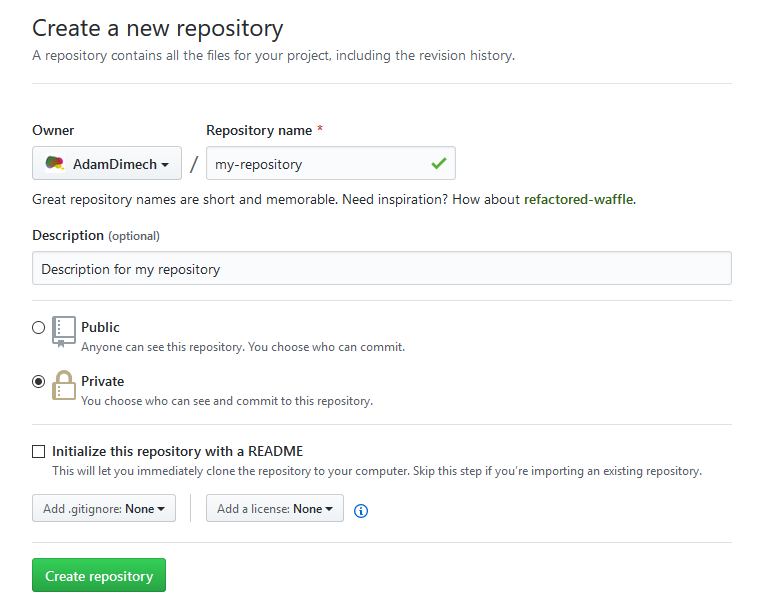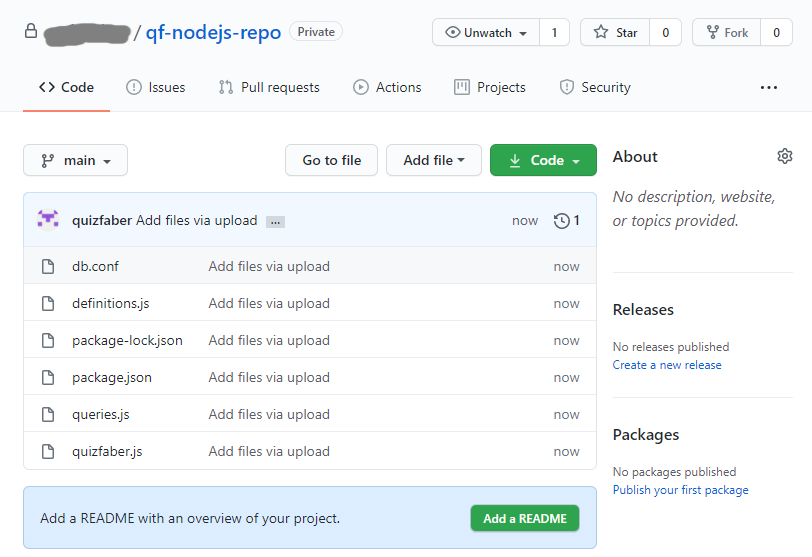
- #Github create new repository install
- #Github create new repository update
- #Github create new repository code
Find the directory of the app you want to make private and edit the file /config/deploy.rb to add a line to set the name of the private repository. In the govuk-app-deployment-private repository there is a directory for each app in GOV.UK that can be deployed. To deploy a private repository, first create a private fork of the govuk-app-deployment repository named govuk-app-deployment-private. Optionally, to create a repository with the directory structure and files of an existing repository, select the Choose a template dropdown menu and click a template repository. In the upper-right corner of any page, use the drop-down menu, and select New repository.
#Github create new repository update
You can use the settings in another repo as a template.ĭeploying the private repository Update govuk-app-deployment Creating a new repository from the web UI.

Choose the owner of the repo and give it a short, memorable name. You’ll now be on the “Create a New Repository” page. Select “New Repository” in the drop-down menu that appears.

Youll be prompted to provide a title and create a new branch. If your workflow uses Pull Requests, rather than direct commits to a repository, you can create a new PR from the Source Control view.
#Github create new repository install
Once logged in, click the “+” icon on the right side of the header menu (which is accessible from anywhere on the site). The GitHub Repositories extension supports viewing and even committing LFS-tracked files without needing to install Git LFS (Large File System). To do so, log in to (or create) your GitHub account. To set up a project on GitHub, you’ll need to create a repo. You may even be able to release a working beta version ahead of schedule.
#Github create new repository code
Additionally, if you allow your repo to be open to the public, others can contribute-whether that involves fixing broken code or even making corrections to typos. RELATED: What Is GitHub, and What Is It Used For?īy creating a GitHub repo, you bring these benefits to your project. This is especially important when multiple people from different time zones are contributing to one project. It’s also good for tracking who contributed to what and when. This version control makes it so that if something breaks, you can easily hunt down the source of the problem and revert back to a working version before the problematic code is pushed.

Git is an open-source distributed revision control system that allows multiple developers ( and writers!) to constantly and consecutively make and track changes to code or documentation in a centralized location without overriding someone else’s work.


 0 kommentar(er)
0 kommentar(er)
